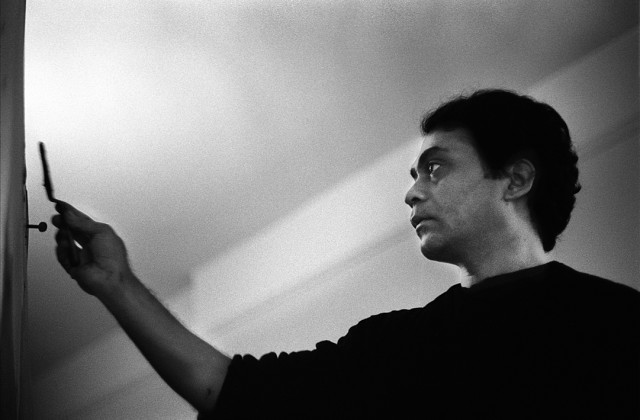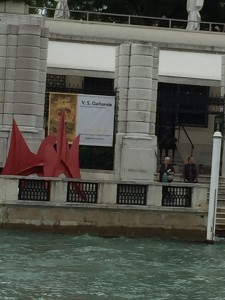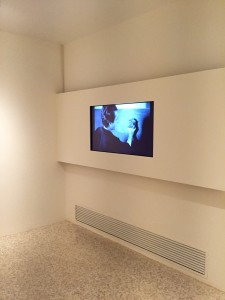Photographs by Bruce Frisch Going on Display in Venice
Photos of Renowned Indian Artist to Accompany Retrospective
By Ruth Melville
Bruce Frisch’s photographs are well known to readers of Norfolk Now. He is the paper’s staff photographer, and his pictures enliven every issue. He also exhibits his work at the annual Norfolk Artists and Friends show, always including some spectacular nature shots taken around town. But a series of photographs he took 50 years ago, of a then unknown artist from India, are about to have their first public viewing in Venice, Italy.
In January 1965, Frisch, along with his wife, Sue, was living in New York City, working for Science Digest magazine and taking photographs—both for work and for pleasure. In particular, for several years he had been taking pictures of an Indian artist named Mohan Samant, who was dating Sue Frisch’s ex-roommate.
Samant suggested to Frisch that he might want to take pictures of a classmate of his from art school in Bombay, V. S. Gaitonde, who was also in New York at the time, on a Rockefeller fellowship. Both artists were member of the Bombay Progressive Artists Group and were interested in European modernism and more abstract forms of painting.
Samant took Frisch to meet Gaitonde, who was living in a room at the Chelsea Hotel, a place well known for attracting writers, artists and musicians as residents. Gaitonde had transformed his small room, which had good lighting with two windows facing out onto 22nd Street, into a small studio. There were some paintings and canvases stacked against the wall, and he had broken down cardboard boxes to spread across the floor to protect it from paint.
Frisch ended up spending three and a half hours photographing the artist as he worked on a single painting from start to finish. Gaitonde used no brushes in his work, only a palette knife, rollers, a squeegee and rags to scrub the canvas and blend colors. Frisch remembers that Gaitonde was very quiet while he was working, and indeed his photographs show a look of intense concentration on the artist’s face. But at the end, when the artist realizes his work is done, there is one close-up of him breaking into a beaming smile. As Frisch left the hotel room, Gaitonde was just doing the edging of the canvas, rubbing the paint on with a piece of rag.
Frisch lost track of Gaitonde’s career after he went back to India, but the painter did indeed go on to become a renowned artist in his native country. He was the first Indian artist to command $1 million for a painting, and one of his works sold for a record $3.8 million.
Gaitonde, who died in 2001, was a lifelong student of Zen Buddhism and Indian philosophy. He thought of his work not as abstract, but as “nonobjective.” He lived quietly in New Delhi, and in his later years especially, he made only few paintings a year, each one painted after a long period of conceptualization. Gaitonde’s emphasis on the moment, the act of creation, makes Frisch’s photographs an especially important record of his methods.
In January 2015 Frisch was surprised to read a review in the New York Times by Holland Cotter of the first major retrospective of V. S. Gaitonde’s work, entitled “Painting as Process, Painting as Life,” then on view at the Guggenheim Museum. Frisch quickly got in touch with the curator, Sandhini Poddar. Although it was too late to include any of his photographs in the New York show, Poddar told him that the exhibit would be traveling to the Peggy Guggenheim Collection on the Grand Canal in Venice in the fall of 2015, and that she would be delighted to include some of his photographs in the Venice show.
Frisch took 127 photographs that January afternoon, and he expects the Peggy Guggenheim show to include 50 to 60 of them. The museum also bought the rights to use two photographs in publicity materials for the Gaitonde show. The show will be up from October 3 to January 10, 2016.
Lead photo by Bruce Frisch. Photos of site visit to Venice by Ruth Melville.




